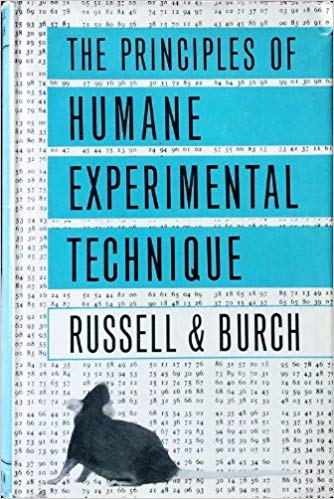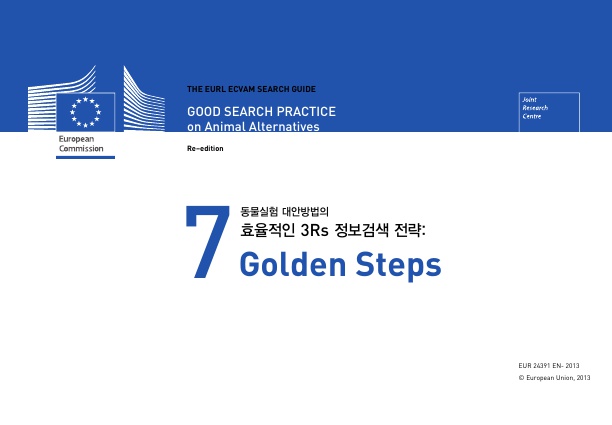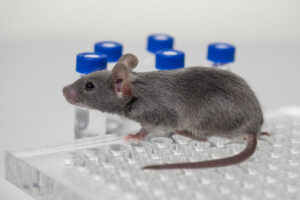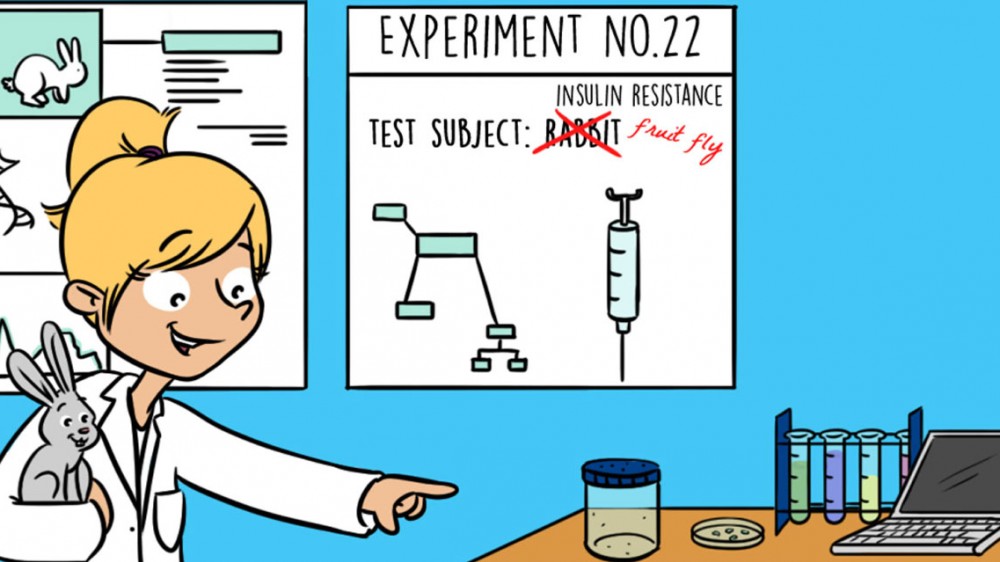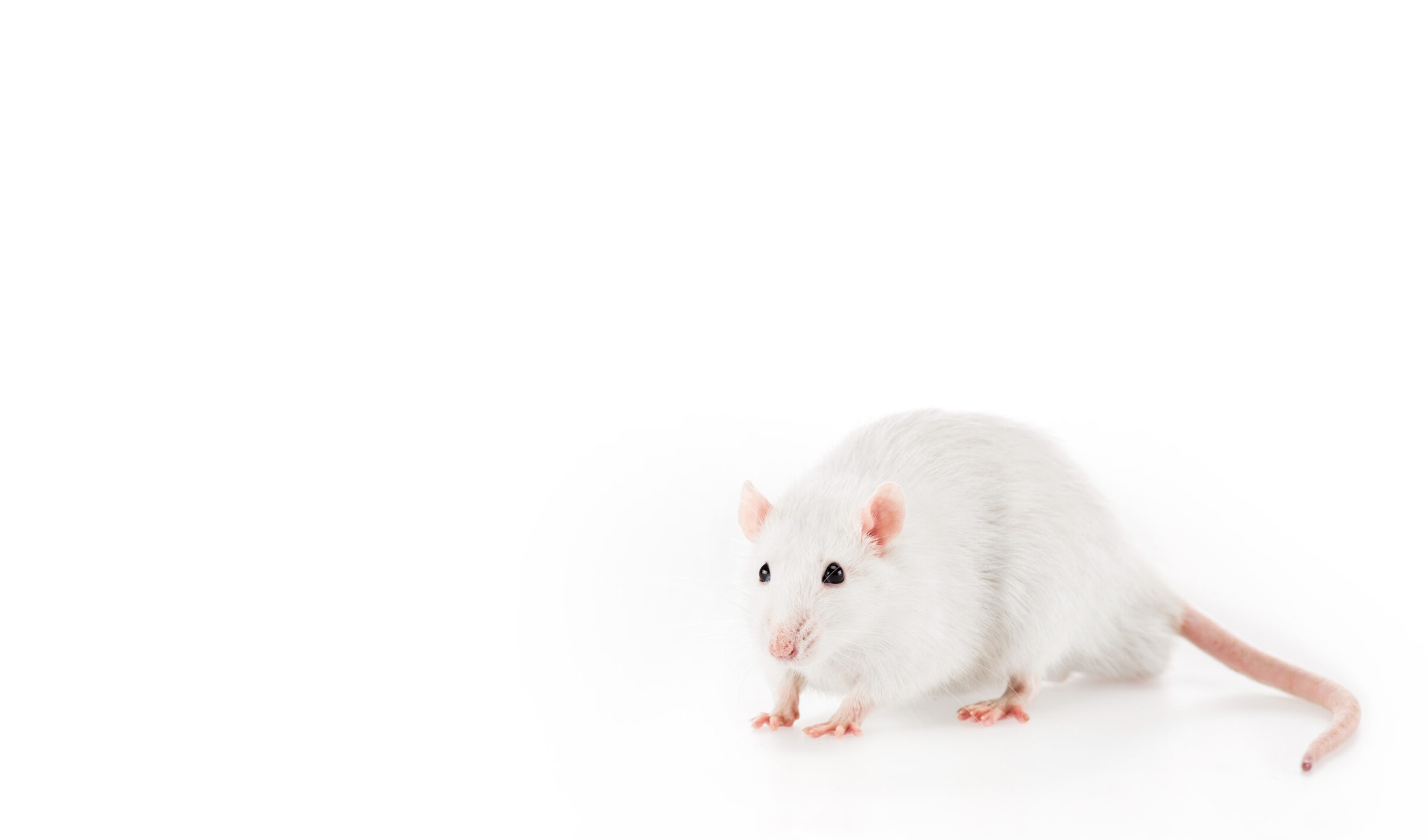
3Rs Principles
1959년 Ressel과 Brunch가 제시한 동물실험의 3R원칙은
윤리적인 동물실험을 위한 기본원칙으로 활용되고 있습니다.

The Three R’s
The Principles of Humane Experimental Technique
by W.M.S. Russell and R.L. Burch
러셀 교수와 버치 박사의 인도적 동물실험의 3Rs 원칙(감소, 완화 및 개선, 대체)는 1954년 UFAW의 주관 하에 실시된 프로젝트의 결과물이며, 1959년 『인도적 동물실험의 원칙(The Principles of Humane Experimental Technique)』이라는 제목의 책으로 출간되었습니다.
미국 존스 홉킨스 대학에서 운영하는 동물시험대체법센터(Johns Hopkins University Center for Alternatives to Animal Testing)에서 최초 발행본을 무료로 다운로드 받을 수 있습니다.
The Three Rs and the Humanity Criterion
동물실험의 3Rs원칙과 인도적 기준
2009년 3Rs 원칙 탄생 50주년을 기념하여 마이클 볼스 교수는 일반인들과 비영어권 독자들도 쉽게 이해할 수 있도록 최신의 동향을 반영한 『동물실험의 3Rs 원칙과 인도적 기준(The Three Rs and the Humanity Criterion)』 요약본 교재를 출판하였습니다.
2015년 최병인 교수와 이귀향 박사는 마이클 볼스 교수가 집필한 요약본 교재의 핵심 내용과 중요성을 그대로 전달하기 위해 여러 분야 전문가들의 자문을 얻어 한글판을 출간하였습니다.
영국의 러셀 교수와 버치 박사가 집필한 『인도적 동물실험의 원칙(The Principles of Humane Experimental Technique)』의 탄생 배경과 저자를 구체적으로 소개하는 한글 문헌이 전무한 실정에서, 본 교재가 동물실험을 계획하는 연구자를 비롯하여 관련자들에게 실험동물의 복지 구현을 위한 지침서가 되었으면 합니다.
The EURL ECVAM Search Guide
Good Search Practice on Animal Alternatives
동물실험 대안방법의 효율적인 3Rs 정보검색 전략: 7Golden Steps
- 실험동물의 윤리적인 사용과 과학적인 발전에 기여하기 위해 적용되는 동물실험원칙 “3Rs”과 관련된 정보를 효율적인 방법으로 검색을 수행하여 효과적인 데이터를 도출할 수 있는 방법을 제공하기 위해 유럽연합에서 제작된 지침서입니다.
- 동물실험의 대안방법에 대한 정보가 체계적으로 구축된 정보원에서 핵심 정보의 데이터를 제공하고, 정보검색 초보자도 쉽게 활용할 수 있게 사용자 편의를 고려하여 제작되었습니다.
- 2016년 최병인 교수와 이귀향 박사가 국내 연구환경과 관련법률에 맞게 목차를 재구성하고, 독자들이 이해하기 쉽도록 전문가와 편집자에게 내용의 자문과 감수를 의뢰하여 한국에 출간하였습니다.
3Rs의 원칙의 개념과 적용
The 3Rs : Their definition, application and inportance to your work
AWIC의 3Rs 관련 정보 제공 사례
An Introduction to NAL’s Animal Welfare Information Center (AWIC)

The Three R’s 현대적 해석
Replacement
대체
표준(Standard)
동물을 이용하지 않는 방법이나 이를 대체하는 방법을 활용
현대적 의미(Contemporary)
동물의 사용없이 중요한 과학적 문제를 해결하기 위해 최신 과학 기술을 기반으로 하는 모델 및 도구의 개발과 사용을 가속화하기
Reduction
감소
표준(Standard)
실험설계 및 통계분석의 개선을 통해 과학적 목표를 달성하는 데 이용하는 동물 수의 최소화
현대적 의미(Contemporary)
관련 근거 문헌을 기반으로 철저하고 재현 가능한 동물실험 설계를 계획하고 분석하여 적절한 동물 수를 산정
Refinement
환경개선 및 고통완화
표준(Standard)
동물실험 전과정에 실험동물의 복지를 향상시키고 고통을 감소시키기 위한 과학적 실험방법 및 동물에 영향을 미치는 기타 요인(운송, 환경, 보정 등) 개선
현대적 의미(Contemporary)
최신 생체 내 대체실험방법을 활용, 실험동물의 복지 개선이 과학적 결과에 미치는 영향을 이해, 지속적인 연구를 통해 실험동물의 복지 및 환경을 개선하기
Russell and Burch’s 3Rs Then and Now: The Need for Clarity in Definition and Purpose
by Tannenbaum, Jerrold , Bennett, B Taylor
Russell and Burch’s The Principles of Humane Experimental Technique was first published in 1959. A Special Edition containing the original text was reissued in 1992, after its ideas had gained widespread interest in the scientific community. In the Principles, Russell and Burch proposed a new applied science that would improve the treatment of laboratory animals while advancing the quality of science in studies that use animals. They introduced and defined the terms replacement, reduction, and refinement, which subsequently have become known as ‘alternatives’ or ‘alternative methods’ for minimizing the potential for animal pain and distress in biomedical research. Here we describe and explain the original definitions of the 3Rs in the Principles, examine how current definitions differ among themselves and from Russell and Burch’s definitions, and suggest relevant considerations for evaluating all definitions of the 3Rs.

영국의 NC3Rs
The NC3Rs has updated the definitions in line with common scientific parlance to highlight the importance of the 3Rs to modern research practices.
CCAC Training Moudule
THREE RS OF HUMANE ANIMAL EXPERIMENTATION
- to discuss the Three Rs as they were defined by Russell and Burch in 1959;
- to introduce the concept of alternatives in research, teaching, and testing;
- to discuss the potential and limitations of alternatives; and
- to consider examples of alternatives and how they may be used
PREPARE Guidelines
The PREPARE guidelines for planning animal research and testing contain links to many resources which can be used to improve applications for animal experiments and implement the 3Rs.

ARRIVE Guidelines
The ARRIVE guidelines (Animal Research: Reporting of In Vivo Experiments) are a checklist of recommendations to improve the reporting of research involving animals – maximising the quality and reliability of published research, and enabling others to better scrutinise, evaluate and reproduce it.

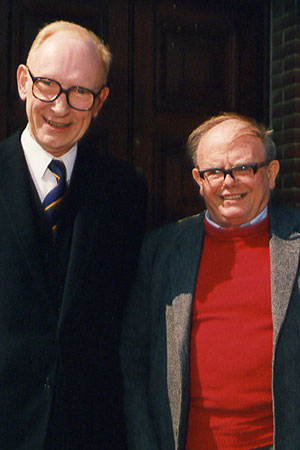
“The greatest scientific achievements have always been the most humane and the most aesthetically attractive, conveying that sense of beauty and elegance which is the essence of science at its most successful.“
Russell & Burch
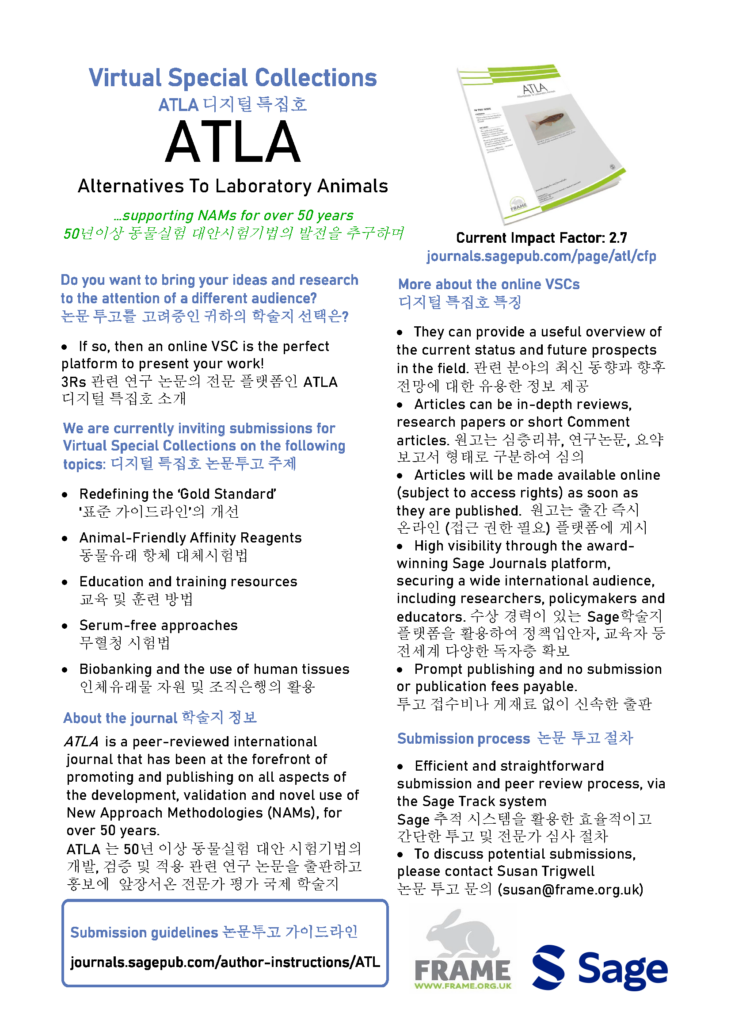

3Rs의 법적 근거
- [미국] Animal Welfare Act 9 C.F.R. 2.31 regulations
- [한국] 동물보호법 제47조 동물실험의 원칙. 실험동물에 관한 법률
- 제47조(동물실험의 원칙) ① 동물실험은 인류의 복지 증진과 동물 생명의 존엄성을 고려하여 실시되어야 한다.
- ② 동물실험을 하려는 경우에는 이를 대체할 수 있는 방법을 우선적으로 고려하여야 한다. (Replacement)
- ③ 동물실험은 실험동물의 윤리적 취급과 과학적 사용에 관한 지식과 경험을 보유한 자가 시행하여야 하며 필요한 최소한의 동물을 사용하여야 한다. (Reduction)
- ④ 실험동물의 고통이 수반되는 실험을 하려는 경우에는 감각능력이 낮은 동물을 사용하고 진통제ㆍ진정제ㆍ마취제의 사용 등 수의학적 방법에 따라 고통을 덜어주기 위한 적절한 조치를 하여야 한다. (refinement)
